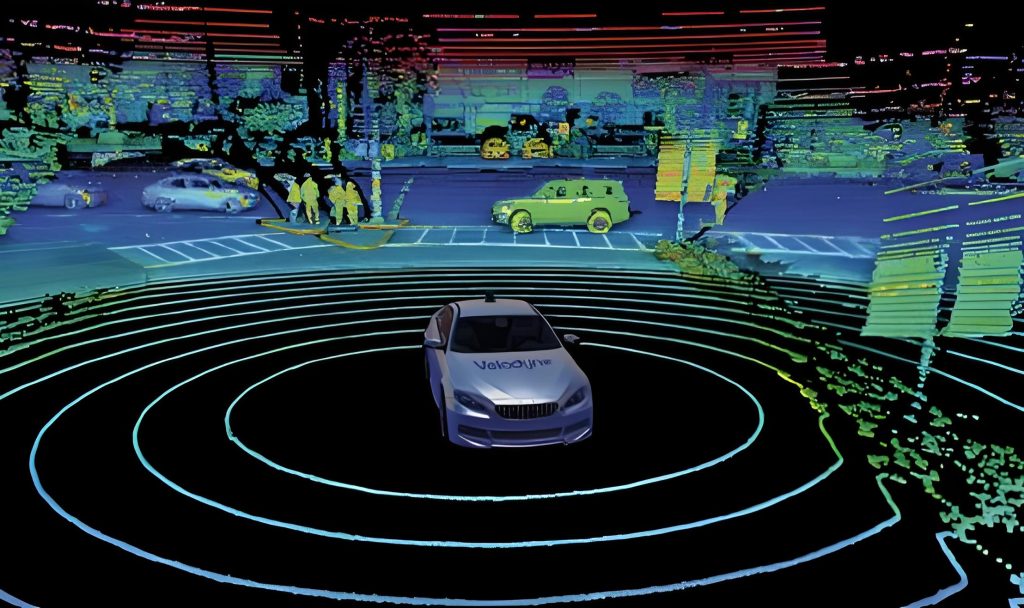The fusion of LiDAR (Light Detection and Ranging) technology with Artificial Intelligence (AI) has become a cornerstone of modern autonomous vehicle systems. LiDAR provides detailed 3D environmental data, while AI enables the interpretation and analysis of this data to make intelligent driving decisions. This article explores how LiDAR and AI work together in autonomous vehicles, highlighting their combined benefits and addressing key challenges.

The Role of LiDAR in Autonomous Vehicles
LiDAR technology plays a crucial role in autonomous vehicles by providing accurate and detailed 3D maps of the surroundings. It measures distances to objects by sending laser pulses and analyzing their reflections, creating a precise representation of the environment. This information is essential for detecting obstacles, navigating complex scenarios, and ensuring safe operation.
How AI Enhances LiDAR Data
1. Data Interpretation and Object Recognition
LiDAR generates vast amounts of raw data, which needs to be interpreted to be useful for driving decisions. AI algorithms, particularly those based on machine learning and deep learning, are employed to process and analyze LiDAR data. These algorithms can recognize and classify objects, such as pedestrians, vehicles, and road signs, by analyzing patterns and features in the 3D point cloud data provided by LiDAR.
AI-powered object recognition systems can differentiate between various types of objects and assess their relevance to the vehicle’s decision-making process. For example, AI can identify a pedestrian crossing the road and determine the appropriate response, such as slowing down or stopping.
2. Scene Understanding and Contextual Analysis
Beyond object recognition, AI contributes to scene understanding and contextual analysis. LiDAR data provides spatial information about the environment, but AI algorithms can analyze this data to understand the broader context. For instance, AI can interpret road layouts, lane markings, and traffic signals to make informed decisions about navigation and route planning.
By understanding the context in which objects appear, AI can better predict potential hazards and respond to dynamic driving scenarios. This capability is crucial for navigating complex urban environments and handling unexpected situations.
3. Real-Time Decision-Making
AI enhances real-time decision-making by processing LiDAR data quickly and efficiently. Autonomous vehicles must make rapid decisions based on real-time information, such as whether to change lanes, merge onto a highway, or avoid obstacles. AI algorithms enable the vehicle to analyze LiDAR data in real-time, allowing for prompt and accurate responses.
For example, if LiDAR detects an obstacle in the vehicle’s path, AI can quickly analyze the situation, determine the best course of action, and execute the necessary maneuvers to avoid a collision.
4. Predictive Analysis and Behavior Prediction
AI’s predictive capabilities enhance the vehicle’s ability to anticipate the behavior of other road users. By analyzing patterns in LiDAR data and historical driving behavior, AI algorithms can predict the actions of pedestrians, cyclists, and other vehicles.
Predictive analysis helps the vehicle prepare for potential scenarios, such as a pedestrian suddenly crossing the road or a vehicle braking abruptly. This anticipation allows for proactive decision-making and improved safety.
Challenges in Integrating LiDAR with AI
1. Data Processing and Computational Power
Processing the large volumes of data generated by LiDAR and AI algorithms requires significant computational power. High-performance processors and specialized hardware, such as GPUs (Graphics Processing Units), are needed to handle real-time data processing and analysis. Ensuring that the system can perform efficiently without delays is a critical challenge.
2. Sensor Fusion and Calibration
Integrating LiDAR with other sensors, such as cameras and radar, requires effective sensor fusion and calibration. AI must be able to combine data from multiple sources to create a comprehensive understanding of the environment. Accurate calibration and synchronization of sensors are essential for achieving reliable results.
3. Adaptability to Diverse Environments
Autonomous vehicles operate in diverse environments, each with its unique challenges. AI algorithms must be adaptable to different driving conditions, such as varying weather, lighting, and road types. Ensuring that AI can generalize across different scenarios and maintain performance is a key challenge.
4. Safety and Reliability
Ensuring the safety and reliability of AI systems is critical for autonomous vehicles. AI algorithms must be thoroughly tested and validated to ensure that they perform correctly in various situations. Safety measures, such as redundancy and fail-safes, are necessary to address potential failures and ensure reliable operation.
Future Directions and Innovations
1. Advanced AI Algorithms
Future developments in AI algorithms will focus on improving the accuracy and efficiency of data processing. Advanced machine learning techniques, such as reinforcement learning and neural networks, will enhance the ability to interpret LiDAR data and make intelligent decisions.
2. Enhanced Sensor Fusion
Continued advancements in sensor fusion will lead to more integrated and accurate perception systems. Combining LiDAR with other sensors and AI will result in a more robust and comprehensive understanding of the environment.
3. Real-World Testing and Validation
Ongoing real-world testing and validation will be essential for refining AI algorithms and ensuring their effectiveness. Continuous data collection and analysis will help improve AI performance and address challenges in diverse driving conditions.
Conclusion
The integration of LiDAR and AI technology has revolutionized autonomous vehicles, providing enhanced perception, real-time decision-making, and improved safety. While challenges remain, ongoing advancements in AI algorithms and sensor fusion hold the promise of further innovations and improvements. As technology evolves, the synergy between LiDAR and AI will continue to drive the development of safe and effective autonomous driving systems.


